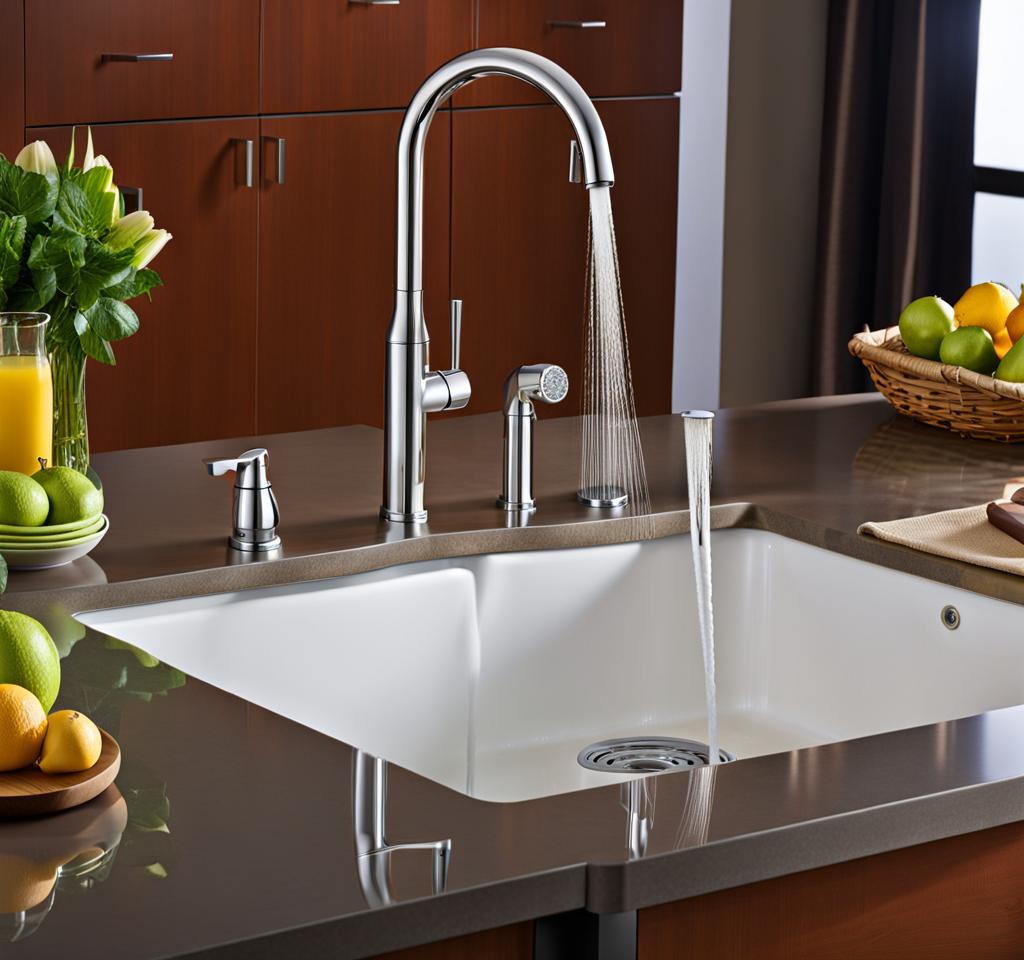If your kitchen faucet keeps coming loose, you’re not alone. It’s a common issue that can be incredibly frustrating, especially when you’re trying to wash dishes or fill up a pot. The good news is, there are solutions, and I’m here to share some expert insights to help you tackle this problem head-on.
Common Reasons Why Kitchen Faucets Become Loose
Before we dive into the solutions, it’s essential to understand the root causes behind a loose kitchen faucet. Several factors can contribute to this issue, including:
- Improper installation or lack of maintenance: If your faucet wasn’t installed correctly from the start, or if you’ve neglected regular maintenance, it can lead to loosening over time.
- Worn-out washers, O-rings, or valve seats: These components are responsible for creating a watertight seal, and when they wear down, it can cause the faucet to become loose and start leaking.
- Excessive water pressure or temperature fluctuations: High water pressure or frequent changes in water temperature can put stress on the faucet components, causing them to loosen gradually.
- Corrosion or mineral buildup in the faucet components: Hard water can lead to mineral deposits accumulating inside the faucet, which can prevent proper sealing and cause loosening.
Understanding the underlying issue is the first step in finding an effective solution. Once you’ve identified the likely culprit, you can move on to the troubleshooting process.
Step-by-Step Troubleshooting for a Loose Kitchen Faucet
Before you start tightening or replacing any parts, it’s crucial to locate the source of the looseness. Is it the base, the handle, or the spout that’s wobbling? Once you’ve pinpointed the problem area, check for any leaks or water damage around the faucet area. These could be signs of a more significant issue that may require professional attention.
Next, gather the necessary tools and materials. Depending on the extent of the problem, you may need a wrench, pliers, replacement washers or O-rings, and possibly a new valve seat or cartridge. Having the right tools on hand will make the job much easier and increase your chances of success.

With your tools ready, follow these steps to troubleshoot and tighten your loose kitchen faucet:
- Turn off the water supply to the faucet.
- Remove the faucet handle and any decorative coverings to access the internal components.
- Check for worn or damaged washers, O-rings, or valve seats, and replace them as needed.
- If the problem is with the faucet base, use a wrench to tighten the mounting hardware securely.
- If the issue is with the spout, you may need to disassemble it and tighten the connection to the faucet body.
- Once everything is tightened and reassembled, turn the water supply back on and check for leaks.
Remember, patience and careful attention to detail are key when troubleshooting a loose kitchen faucet. If you encounter any difficulties or are unsure about any step, don’t hesitate to seek professional help.
Professional Tips and Tricks to Secure Your Kitchen Faucet
While the troubleshooting steps above can help you tighten a loose faucet, there are some additional tips and tricks from the pros that can ensure your faucet stays securely in place for the long haul:
- Properly tightening the faucet base and mounting hardware: Make sure the faucet base is securely mounted to the sink or countertop. Use a basin wrench or other specialized tools to get a tight fit without over-tightening.
- Replacing washers, O-rings, and valve seats as needed: Even if they don’t appear worn, it’s a good idea to replace these components periodically to prevent future loosening or leaks.
- Adjusting water pressure or installing a pressure reducer: High water pressure can put excessive strain on your faucet components, leading to loosening over time. Consider installing a pressure reducer if your water pressure is too high.
- Cleaning and descaling the faucet to remove mineral buildup: If you live in an area with hard water, mineral deposits can accumulate inside the faucet and cause issues. Regularly cleaning and descaling the faucet can help prevent this buildup.
By following these professional tips and tricks, you’ll not only get your loose kitchen faucet securely tightened but also extend the lifespan of your faucet and prevent future issues.
While many loose faucet issues can be resolved with some DIY effort, there are times when it’s best to call in a professional plumber. Here are some signs that you may need expert help:
- Signs that DIY repair is not feasible or safe: If you’re uncomfortable working with plumbing or the issue seems beyond your skill level, it’s better to avoid potential damage and call a professional.
- Benefits of professional faucet installation or replacement: If your faucet is old or outdated, or if the loosening issue persists despite your efforts, it may be time for a new faucet. Professional installation can ensure proper fitting and longevity.
- Preventing future loosening issues with quality faucets and proper maintenance: A skilled plumber can recommend high-quality faucets and provide guidance on proper maintenance to prevent future loosening problems.
Don’t hesitate to seek professional help when needed. A qualified plumber can not only resolve your loose faucet issue but also provide valuable insights and recommendations to ensure your kitchen plumbing stays in top shape.
By understanding the common causes, following the troubleshooting steps, and implementing professional tips and tricks, you can say goodbye to that frustrating loose kitchen faucet once and for all. And remember, if the issue persists or seems beyond your capabilities, don’t hesitate to call in the experts. With the right approach, you can enjoy a securely tightened faucet and peace of mind in your kitchen.

This is where you’ll find inspiration to create a stylish and beautiful dream home.